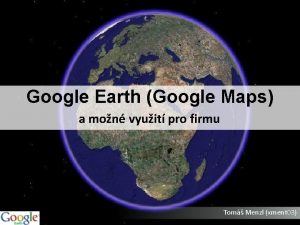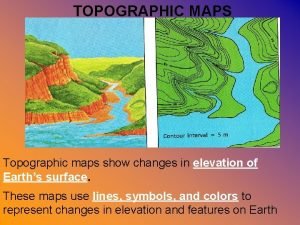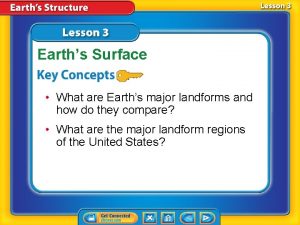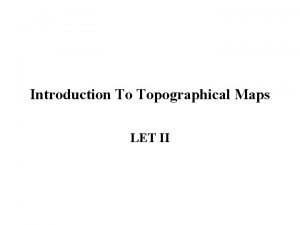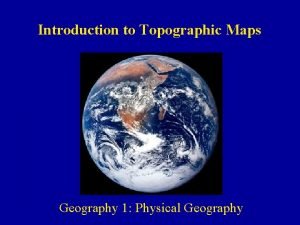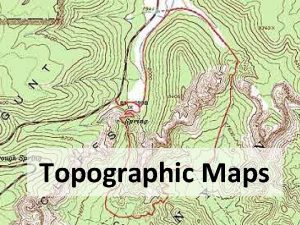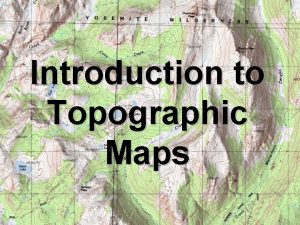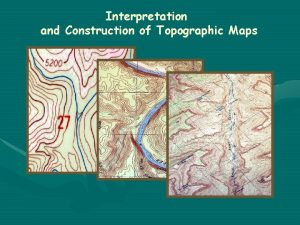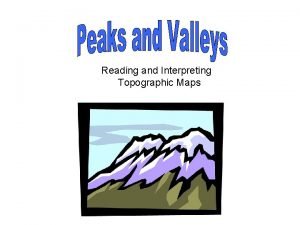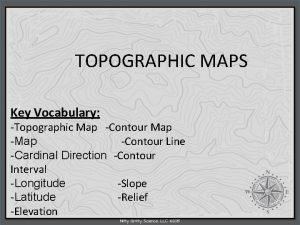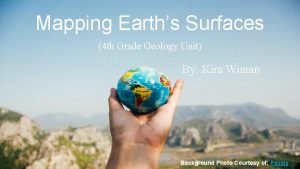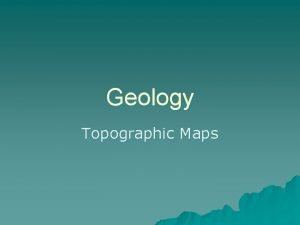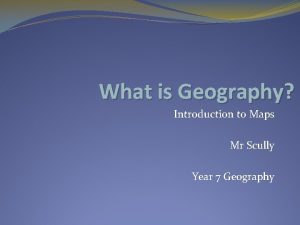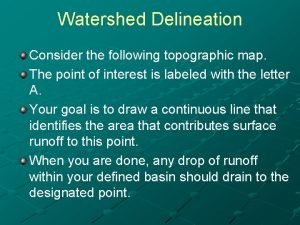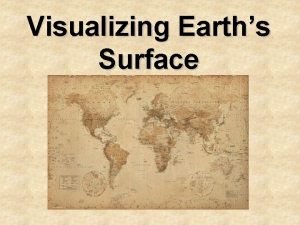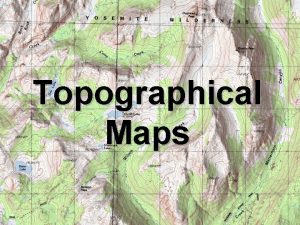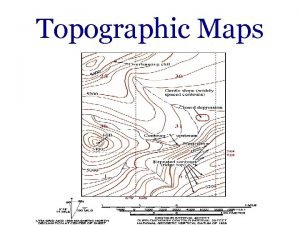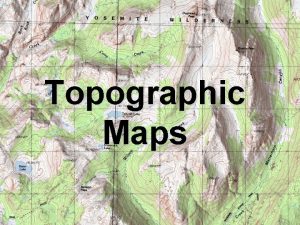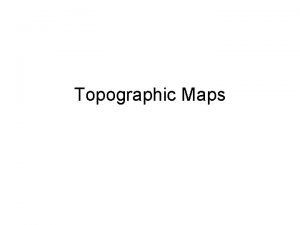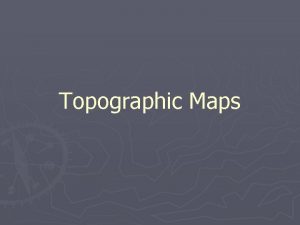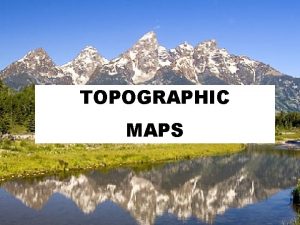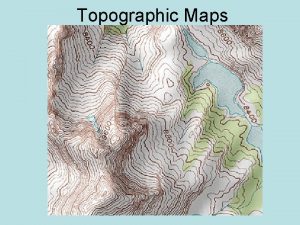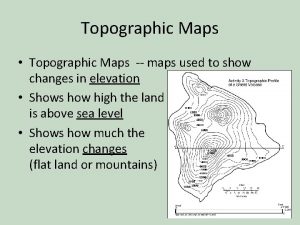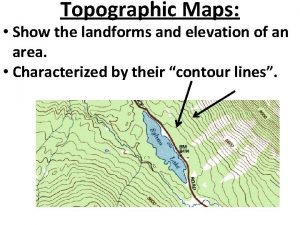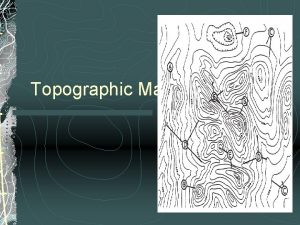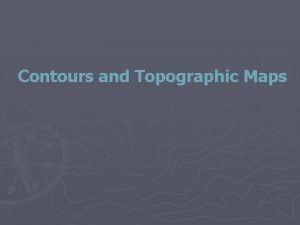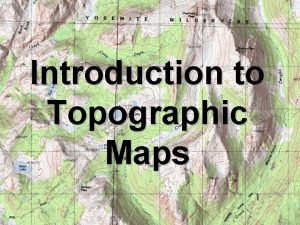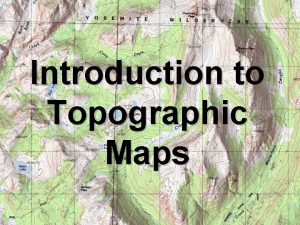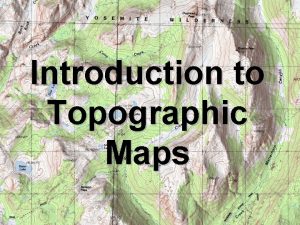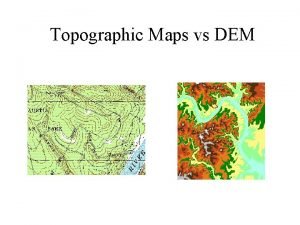Topographic Maps Show the landforms and elevation of




















- Slides: 20

Topographic Maps: • Show the landforms and elevation of an area. • Characterized by their “contour lines”.

Elevation: • How high an object is above “sea level”. • The level of the ocean’s surface is used to measure the height of physical features.

Uses of Topographic Maps: 1. Agriculture – how soil can be conserved. 2. Environment – scientists can determine how much water/wind will cause erosion and can try to prevent it. 3. Weather – topography effects weather patterns.

Contour Lines: • Show areas of similar elevation. • “Indexed” contour lines have a number on them, telling you the elevation. • Usually every 5 th line. • The other lines do not have labeled elevations.

Elevation is increasing

Contour Interval: • The change in elevation that each contour line represents. • Can be very small in areas with little change, or very large in areas with rapid change.

Contour Interval = 20 780 740 720 680 760 820

Check it! What is the Contour Interval? A – 10 B – 20 C – 30 D – 40

What is the Contour Interval? A – 25 B – 50 C – 75 D - 100

Contour Lines: • The closer the lines, the more rapid the change in elevation! (Steeper the slope). • The more spread out the lines, the less rapid the change! (Gradual slope).

Slow change in elevation! Rapid change in elevation!

Check It! If you wanted to have an intense workout, what area would you want to hike? A B

Colors on Topographic Maps: • Brown = most contour lines • Green = vegetation such as woods. • Blue = water (lakes, rivers, swamps, glaciers, etc. ) • Black = manmade objects such as hiking trails. • Red = manmade features such as roads and political boundaries.

Contour line Vegetation Political boundary Hiking trail Water

Check it! Which area on the map would be harder to walk through due to more vegetation? A B

Which star on the map indicates a higher elevation?

Review 1. Which of the following would you not find on a topographic map? A – Elevation B – Lakes C – Temperature D – Hiking trails

2. Which area on the map shows the steepest slope? A B C D

3. Analyze the contour lines to the right. What is the Contour Interval? A – 10 B – 20 C – 25 D – 50

4. What is the Contour Interval of the topographic map to the right? A – 10 B – 20 C – 25 D – 40
 Topographic maps show
Topographic maps show Maps that show changes in elevation of earth's surface
Maps that show changes in elevation of earth's surface Describe the erosion of the three major landforms
Describe the erosion of the three major landforms Let ii
Let ii Introduction to topographic maps
Introduction to topographic maps Drawing contour lines worksheet
Drawing contour lines worksheet Gradient contour lines
Gradient contour lines Construction and interpretation of relief profile
Construction and interpretation of relief profile Why can't contour lines ever cross
Why can't contour lines ever cross Topographic map vocabulary
Topographic map vocabulary Topographic maps
Topographic maps Independent practice: topographic maps
Independent practice: topographic maps Maps google maps reittihaku autolla
Maps google maps reittihaku autolla Whats a topographic map
Whats a topographic map What is contour lines in geography
What is contour lines in geography Watershed delineation
Watershed delineation Hachure marks examples
Hachure marks examples A topographic map is a two dimensional model
A topographic map is a two dimensional model Whats a topographic map
Whats a topographic map A topographic map is a two dimensional model
A topographic map is a two dimensional model Benchmark topographic map
Benchmark topographic map
